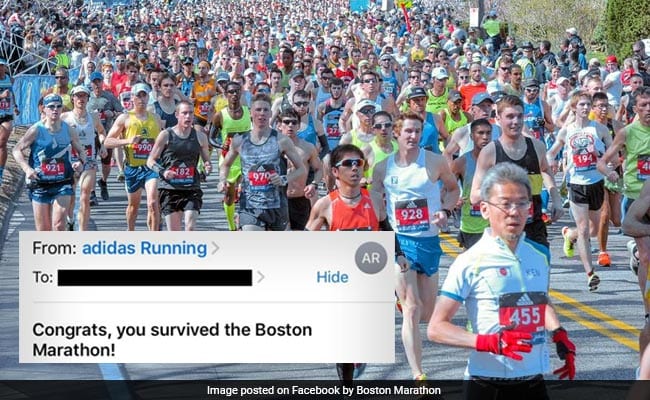
In the age of the Millennials and the GenZers, the drab, old “Look at our product, look at how lovely it is” methods do not work. At all. These people love their memes and gifs; they’re aware and vocal about their social causes; to them, celebrities are closer to being role models than merely evening entertainment. Thanks to these factors, they have a superpower when it comes to sniffing out brands trying to sell them stuff under the guise of caring about them.

To appeal to these masses, you will have to get with the times, so to speak. There are lots of ways you can do this, but the most popular perhaps is the use of pop culture as a marketing device. Lots of brands are exploring this (not so) new possibility and most of them are succeeding in attracting the right kind of attention. Because of this, using pop culture references in marketing is starting to gain the reputation of being a sure shot way to success; the ultimate weapon in a marketer’s arsenal.
But even this so-called “sure shot” way has taken some victims, mostly because these brands didn’t fully understand how to use pop culture. They either looked at it as a last resort to appeal to the younger generations or were trying to look hip and cool without putting any actual thought into it.
If you don’t want to fall victim to the devil disguised as a shiny, new, easy-to-use marketing method, there are some no-no’s that you might want to take a note of.
What is Pop Culture?
Before getting into what you should not do with pop culture, let’s quickly see what pop culture is and what it consists of.

Simply put, “pop culture” refers to anything that a society as a whole (or a majority of the society) considers to be mainstream. So any set of practices, beliefs, and objects that are widely accepted to be dominant or omnipresent can be categorized as pop culture. Pop culture is prominent (and sometimes originates from) movies, music, television, video games, sports, news (as in people/places in the news), politics, fashion/clothes, technology, and slang.
Since the very definition of pop culture is beliefs and practices that are omnipresent and dominant, it has a strong influence on, not only the entire society but also on the everyday lives of individuals. This very aspect of pop culture is what makes it a double-edged sword for brands; since people are so familiar with pop culture, they will either relate to your message or be harshly critical of it.
The Biggest Don’ts of Pop Culture Marketing
1. Using Social Causes to Sell Your Product
The biggest mistake brands make in the haste of getting on the pop culture bandwagon is to use social causes to sell their product. Now you’re probably thinking, “hey, wait up, lots of brands talk about social causes and it gets them so much popularity.” And you’re right, they do talk about social issues and it does get them the popularity, but that is because they show that they genuinely care about the topic and the people; they do serious research about it before making any comments, they interact with the people facing the issue, vocalize their support, launch drives and campaigns promoting awareness about the cause.

None of them says “buy out products if you believe that black lives matter” or “using our product will help resolve this issue.”
Look at what happened when Pepsi tried that; it became the biggest, most talked about marketing blunder of the year. People were so outraged by it that PepsiCo president Brad Jakeman stepped down and called the ad “the most gut-wrenching experience of my career.” Yeah, it was that bad.
The reason this practice is so frowned upon is that it minimizes the experience of the victims and survivors; it basically says “use our product! It will settle the arguments that have taken hundreds of victims and stop all the violence and anguish caused!!” In short, it is wildly, outrageously insensitive.
2. Looking at Alternate Implications of Your Message
This point is applicable even if you aren’t using pop culture marketing because there are a lot of words in every language that have multiple meanings and using the wrong words can have terrible, brand image shattering consequences.
To understand this point, let’s see how a popular brand messed up a pop culture reference without even making the reference.
Adidas is a sportswear brand so it is obvious that it will get involved in marathons and triathlons and other such sports competitions. This is exactly what it did after the 2017 Boston Marathon when it sent the runners an email with the subject line “Congrats, you survived the Boston Marathon!”

Sounds harmless, right? Everyone says “you/I/they survived” something that needed lots of efforts. But people all over twitter expressed outrage and pure disgust over the subject line of this particular email. The reason: the Boston Marathon bombingof 2013, which killed three and injured more than 260 others, in which case “surviving” the marathon had a completely different connotation.
So, to avoid coming off as insensitive and careless, make sure that you look at your campaign from every angle possible.
3. Not Doing Proper Research
Everyone uses pop culture references in normal conversation, but if you’re a brand, you need to be very careful with how, when, and where you use these references; otherwise they will come back to haunt you.
Take Wendy’s for example; it is a fast food restaurant company but is probably better known for its witty Twitter persona. In 2017, it got some serious backlash over tweeting a Pepe the frog meme. If you don’t know who the infamous Pepe is, it was an innocent, funny meme that was made famous as a white supremacist symbol in the 2016 United States presidential election.
In defence of the person who posted the meme, Amy Brown, the social media manager at Wendy’s, said that he was “unaware of the recent political connotations associated with Pepe memes…Since this used to be purely an innocuous meme, he had this fan content saved from a year or two ago,”
4. Don’t Underestimate Your Campaign’s Success
When it comes to promoting your brand using pop culture references, never, ever underestimate how well it will do; in fact, it will do you some good if you prepare for things going slightly better than expected (slightly, because you don’t want to waste resources).
perfectly exemplifies what happens when you underrate the power of pop culture. Back in 2017, McDonald’s promised Rock and Morty fans a “super limited” release of the famous sauce, the episode of which topped 11 million viewers. But when they said super limited, they meant super limited because some locations got only 20 packets of the sauce while others got zero and lo and behold, madness ensued.

You can do everything right with a pop culture reference but still get hit with a major fail if you underestimate its success.
5. Don’t Use Funny References at Serious Places
Some pop culture references are hilarious (like “The Dress”) while some are highly sensitive (like social causes) and each has a time and place to be used.
An example where a brand failed to realize this is the Yanny/Laurel
by the U.S. Air Force. While you might think it is impossible to go wrong with such a light-hearted, funny ice-breaker, the U.S. Air Force managed to do just that by tweeting “The Taliban Forces in Farah city #Afghanistan would much rather have heard #Yanny or #Laurel than the deafening #BRRRT they got courtesy of our #A10.”
Whoa! Insensitive much?
Safe to say, the internet did not take this well.
Now, this doesn’t mean that funny reference can be used in serious settings (a good example being Salvation Army using “The Dress” to shed light on domestic violence), and the vice versa, sometimes, it’s better to just not do that.
Using pop culture and pop culture references to be more relatable to your audience is not wrong; neither is speaking up about social causes. But what matters here is your intention. Remember that your audiences, especially the younger ones, have a special ability to see through brands masking sales pitches with pop culture. What’s worse, they’ll definitely call you out for it.
An easy way to successfully use pop culture as a marketing device is to do proper research, be aware of the situation around the particular reference, use it at the right time, in the right setting, and never ever underestimate the influence a good reference holds.
Watch Motivational video @ https://bit.ly/2Pff2kn

Leave a Reply